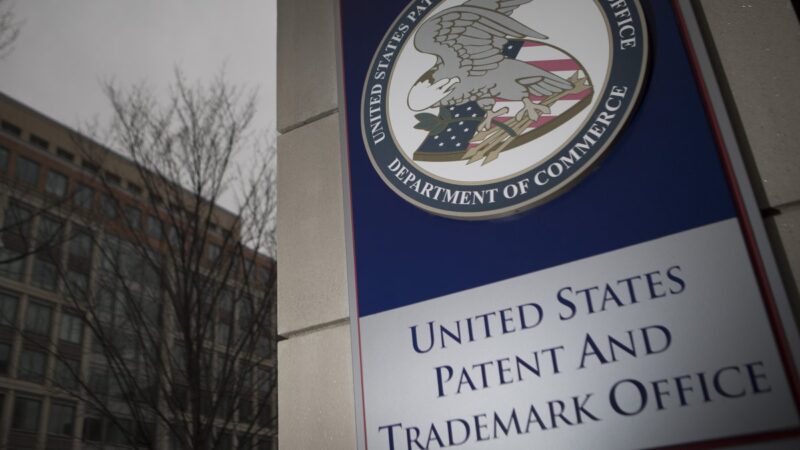IP is Not IP: Intellectual Property is Not Industrial Policy, and Why This Matters

Competition by China with the United States for global leadership in innovation has prompted anew an age-old policy debate: What are the best policies and legal institutions to promote next-generation inventions like 5G, AI, and mRNA vaccines? Are innovations best promoted and distributed either through industrial policy initiatives like prizes, subsidies or tax incentives or through private investments spurred by intellectual property rights and their commercialization in the marketplace? The answers to these questions have real consequences for the U.S. innovation economy today.
Thankfully, policymakers now have access to a treasure trove of historical and economic data in a recently published book, Inventing Ideas: Patents, Prizes, and the Knowledge Economy by Dr. B. Zorina Khan, an award-winning economist. Dr. Khan builds upon her prior historical research into the economic function of reliable and effective patents rights as a driver of new markets and economic growth. Her earlier research demonstrated that people were able to invent new products and services because they received reliable and effective property rights in the fruits of their inventive labors—patents. Economists have consistently shown that property rights, when secured by stable legal institutions functioning under the rule of law, promote economic growth. The U.S. patent system is a prime example of this historical and economic insight. It represented the “democratization of invention,” and, as a result, was a key contributor to the explosive growth of the U.S. innovation economy in the Industrial Revolution.
Inventing Ideas goes much further than her prior research, as Dr. Khan now addresses the essential comparative question of whether patents function better than other innovation-promoting systems, such as prizes, taxes, or public subsidies. Dr. Khan labels the latter as an “administered system” of innovation. These are contrasted with intellectual property rights, like the U.S. patent system, which she identifies as a “market-based system” of innovation. In comparing and contrasting these two systems, Dr. Khan’s book presents a treasure trove of historical, institutional, and economic data that is unparalleled in any other study of this subject.
A market-based system of innovation is exemplified by modern patent rights, which have been defined and secured under U.S. law as property rights. For example, the U.S. created very low administrative barriers in obtaining patents, such as low fees and settled legal rules for receiving patents, similar to registering title in land. As property rights, patents were also interpreted and enforced by courts, legal institutions governed by the rule of law. Lastly, patents achieved their key economic function in the U.S. by securing to inventors an “exclusive right” that could be sold, licensed, collateralized, or otherwise exchanged in the marketplace.
In contrast, prizes and other governmental programs like public subsidies or tax incentives represent what economists call public-ordering legal systems. These institutional regimes consist of top-down decision-making by governmental administrators, or their designated agents, who select in advance what inventions will receive prizes and how much reward will be granted. They also decide who will receive prizes. Furthermore, prizes are not tradeable assets that drive economic activity; once a prize is granted, it has served its role of rewarding the recipient. Thus, prizes are not the basis for licensing or other commercial activities in the marketplace.
In comparing and contrasting market-based or administered systems of innovation, Dr. Khan vividly brings to life through case studies and historical vignettes the inventors, lawyers, businesspersons, and officials who participated in both systems. One of my favorites is President Abraham Lincoln. Patent lawyers already know that Lincoln is the only President to have received a patent. We now learn in Inventing Ideas that Lincoln also funded his early political campaign from his work as a lawyer in one of the many patent lawsuits over the mechanized reaper, the famous labor-saving invention by Cyrus McCormick.
Dr. Khan’s detailed, first-hand examination of the historical record reveals that many claims today about the alleged superiority of administered systems over market-based systems are based on misinterpretations of the facts or outright myths. For example, she deftly critiques a now-classic “chestnut” among economists and patent scholars that the exhibitions and prizes awarded at nineteenth-century world fairs demonstrate that innovation occurs without patents just as much as it does with patents. Through a detailed review of the prizes granted at the Crystal Palace Exhibition of 1851 (the first world fair), she reveals that the prize standards were arbitrary, and recipients did not receive prizes for actual innovations that would qualify for patent protection. She further demonstrates that the prize systems run in Britain by the Royal Society and the Royal Society of Arts (a separate entity) were influenced by many factors other than technological merit, such as elitism, nepotism, and other biases. These prize systems contrast sharply with the settled legal rules and due process that defined the issuance and enforcement of U.S. patents, which, as detailed in Inventing Ideas, provided the reliable and effective legal foundation for patents to function as economic drivers of marketplace innovations.
Ultimately, all institutions and legal systems have costs and benefits. Dr. Khan’s in-depth historical research, engagingly presented in Inventing Ideas, represents the most wide-ranging, evidence-based comparative analysis of whether administered systems like prizes or subsidies produce more innovation and economic growth than a market-based system of patent rights. The conclusion seems inescapable: a market-based system in patent rights is superior to an administered system. Hopefully, Congress and other policymakers will learn the important lessons in Inventing Ideas as they consider how best to promote innovation today.

Adam Mossoff
Contributor


Assessing the Patent and Trademark Office’s Inventorship Guidance for AI-Assisted Inventions
